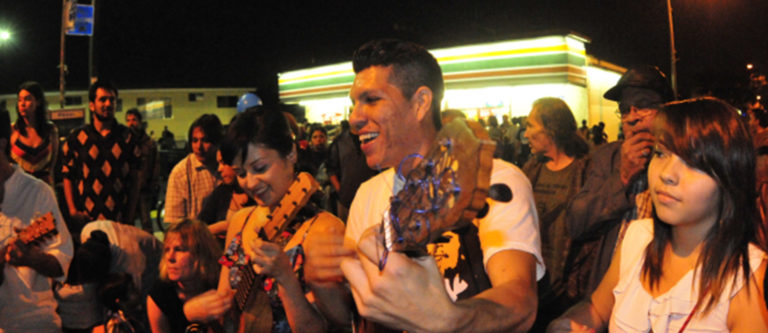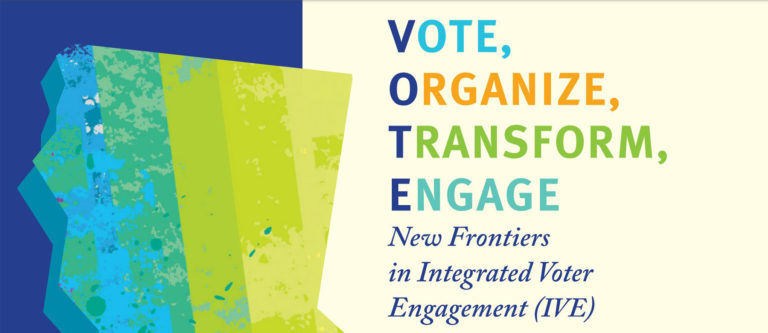Last week I attended the Funders’ Committee for Civic Participation (FCCP) convening in Denver, Colorado, in my role as FCCP’s national co-chair. We experimented with offering a half-day learning lab on “Equity, Grantmaking, & Reaching our Collective Goals.”
Kicking it off, I shared that I sometimes question how to show up in these conversations. From my experience being born and adopted into working-class families, as a woman of color, and as a second-generation immigrant from the Caribbean, confronting equity issues was part of my journey long before I had the language or tools for it.
But when someone asks me what I do for a living, I’m reminded of the power and privilege I’m benefiting from as a leader within a foundation, as a light-skinned person, and someone with dual citizenship. I invited the audience to reflect on and share how they describe their jobs to people outside of philanthropy. The top descriptors that surfaced — in a room of over 150 funders — were money, power, and people. Together we took a moment to acknowledge how lucky we are to be entrusted with these jobs and responsibilities.
No matter what our life experiences, as philanthropic leaders we are collectively in charge of shaping how billions of dollars in social change capital is spent every year. It’s our duty to build our individual awareness on how to manage that privilege and to insist that our institutions develop responsible grantmaking practices for equitable access and accountability to beneficiaries.
This FCCP session was designed to help funders do just that. While FCCP member funders are often supporting power building and equity work in communities, we are now turning that lens inward to assess and positively change our institutions in ways that better support the field.
Session highlights included an activity by Mario Lugay of Justice Funders. He led a data-collection effort to establish a baseline understanding of where funders in the room were at, institutionally,with practices of justice and equity. He shared a helpful checklist for institutions to assess grantmaking practices with an equity lens.
I also participated in the breakout, “Reflecting on Privilege for Transformative Grantmaking,” which highlighted how privilege in philanthropy can serve as a barrier to change. It was an opportunity to listen to a conversation among three funders who have each gone on their own journey, made mistakes, learned from those mistakes, and continued to try to increase the flow of resources to organizations led by people of color and rooted in the communities they serve.
Then there was an interactive discussion calling out the toughest counterarguments that foundation staff may face from their own institutions when attempting to advance racial and gender equity. Peers offered coaching on how to address them.
Here’s what I took away from participating in the conversations:
- Leverage data about your foundation’s grantmaking to assess whether the institution is treating grantees equitably, and adjust practices accordingly.
- Provide targeted support to build capacity in ways that level the playing field for organizations that serve critical community needs — but who face barriers to capital and supports. Smaller organizations, those led by people of color as well as young adults often face these challenges. Grantmakers for Effective Organizations has addressed this dynamic in its “Vision for Smarter Grantmaking,” which suggests that grantmakers should: “Operate on the knowledge that systemic racism has led to inequitable distribution of resources — and ensure that organizations led by and serving people of color receive an equitable share of grant dollars.”
- Funders have access to people in power: other funders, elected officials, and business leaders. We’re uniquely positioned to spotlight and catalyze where we see opportunities for community investment and to facilitate access to these power players for field leaders.
- Think about how we can ease the burden for grantees and still maintain rigor. One way is to revisit what’s a “must have” versus a “nice-to-have” for proposal and reporting requirements, in partnership with grantees.
- Look closely at your foundation’s board selection criteria, term limits, training, and facilitation of board meetings. Staff can’t lead the board as much as we’d like, if the decision-making seats haven’t been appointed with intention.
We know that doing this work in our own foundations takes time, dedication, and a willingness to ask tough questions. Irvine is committed to ensuring that our grantmaking practices both help support our grantees in achieving impact for the vital work they do as well as help the field build true power over time. We, and I, still have so much to learn.




